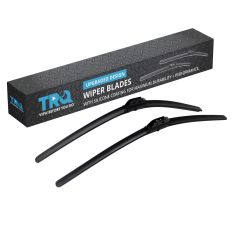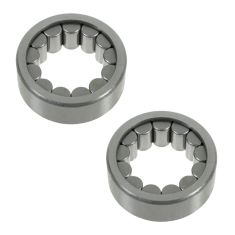Replaces
2005 GMC Envoy XUV Rear Driver & Passenger Side 2 Piece Wheel Bearing Set TRQ BHA54513
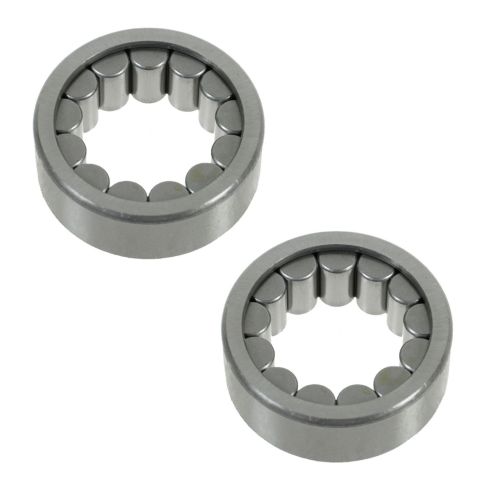





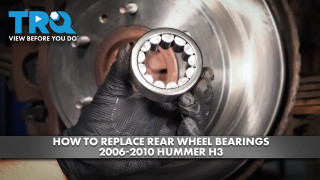
BHA54513
This part doesn’t fit a . Select from parts that fit.
Specify your vehicle's year, make and model to guarantee fit.
This part does not fit a .
Buy in the next and
Get it by: Tuesday, Dec 23 with expedited shipping
Recommended for your 2005 GMC Envoy XUV
Frequently bought together
Specify your vehicle's year, make and model to guarantee fit.
This part does not fit a .
Part Details
- (1) Rear Driver Side Wheel Bearing
- (1) Rear Passenger Side Wheel Bearing
- Cylinder
- 2 Piece
Specifications
- Driver & Passenger Side
- Rear
About TRQ:
TRQ is a trusted brand dedicated to making every repair a success story by combining premium parts with easy installation. Each TRQ part is engineered by a team of automotive experts to meet or exceed OEM standards, delivering enhanced performance and maximum longevity. With rigorous in-house testing, the brand ensures superior fit and function across every product line. TRQ also provides customers with best-in-class, step-by-step installation videos—so you can complete repairs with confidence, whether you're a first-time DIYer or an industry professional.
Attention California Customers:
![]() WARNING: This product can expose you to chemicals including Lead and Lead Compounds, which are known to the State of California to cause cancer, and birth defects or other reproductive harm. For more information, go to www.P65Warnings.ca.gov.
WARNING: This product can expose you to chemicals including Lead and Lead Compounds, which are known to the State of California to cause cancer, and birth defects or other reproductive harm. For more information, go to www.P65Warnings.ca.gov.
Lifetime Warranty
This item is backed by our limited lifetime warranty. In the event that this item should fail due to manufacturing defects during intended use, we will replace the part free of charge. This warranty covers the cost of the part only.
FREE Shipping is standard on orders shipped to the lower 48 States (Contiguous United States). Standard shipping charges apply to Hawaii and Alaska.
Shipping is not available to a P.O. Box, APO/FPO/DPO addresses, US Territories, or Canada for this item.
Expedited is available on checkout to the United States, excluding Alaska, Hawaii.
Final shipping costs are available at checkout.

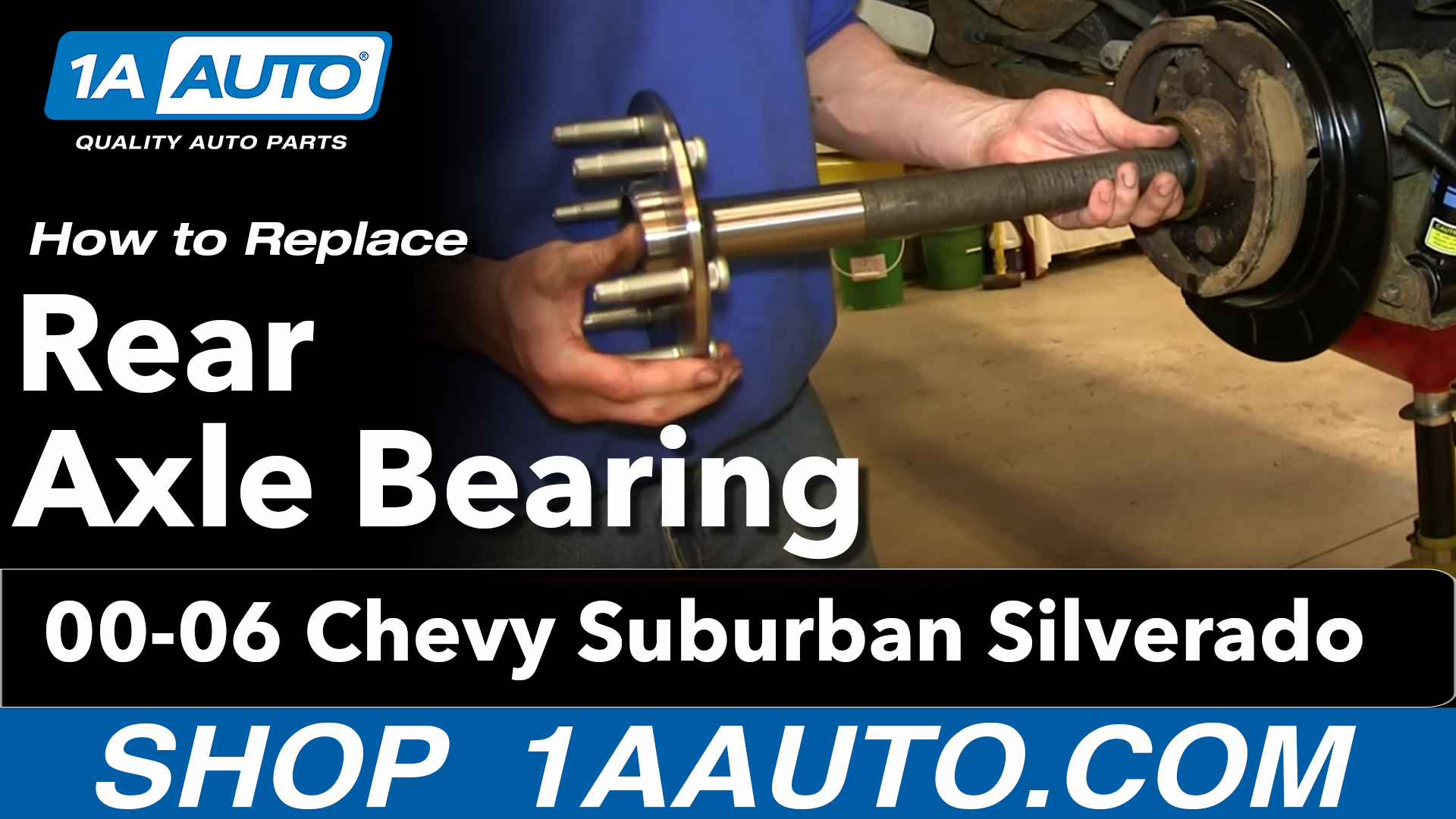
Created on:
Tools used
- Loosen the lug nut covers with a 22mm socket Pull off the center cap Loosen the lug nuts with the vehicle on the ground Raise the vehicle with a floor jack Secure the vehicle on jack stands Remove the lug nuts Pull off the wheel
- Remove the two 12mm bolts from the brake caliper Push in the brake caliper pistons with a large C-clamp Pull the caliper aside Pry the brake pads off with a flat blade screwdriver
- Remove the two 18mm bolts from the brake caliper bracket Pull off the brake caliper bracket Pull the rotor off
- Remove severe rust from the differential cover bolts with a hammer and chisel Remove all but the bottom 13mm bolts from the differential cover If removing rust made the bolts smaller, hammer a 1/4 inch socket onto the bolts Have a drain pan ready Remove the bottom 13mm bolts from the differential cover Pry out the bottom of the differential cover with the hammer and chisel Thread the top 13mm bolt into the differential cover Allow the fluid to drain Pry out the bottom of the differential cover with the chisel Remove the top 13mm bolt Pull the differential cover down and out
- Clean any debris out of the differential with a vacuum Clean the differential with a cloth rag Scrape off the old differential cover gasket with a razor blade Clean any residue with a wire brush
- Put the vehicle in neutral Turn the differential chuck by hand so the 8mm bolt is visible Remove the 8mm bolt Pull the pin out of the differential Push the axle in Turn the driveshaft by hand until the small axle C-clamps are visible Remove the C-clamp with a magnet Pull the axle out
- Put the correct size bearing puller into place Thread the nut on the axle puller Pull the bearing with the bearing puller
- Put the new bearing into place Hammer the bearing into place with a bearing installation tool and hammer Drive the bearing in to the positioning line Apply gear oil to the bearing Tap in the bearing seal with a hammer
- Slide the axle into place, being sure not to drag it on the bearing seal Push the axle into the differential Insert the C-clamp onto the axle Pull the axle out Insert the pin into the differential Insert the 8mm bolt into the differential
- Apply RTV to the new differential cover Place the gasket onto the differential cover, lining up the bolt holes Apply RTV to the gasket
- Clean any fluid off of the mounting surface with a cloth rag Put the differential cover into place Thread the top 13mm bolt into the differential cover Thread the remaining 13mm bolts Replace the wiring harness connected to one of the top bolts Let the RTV set Tighten the 13mm bolts to 15 foot-pounds of torque in a crossing pattern
- Remove the filler plug with a 3/8 inch ratchet If necessary, hammer the ratchet into the plug Add fluid to the differential until it drips out the fill hole Check that the fluid level is up to the fill hole Tighten the fill plug into the fill hole
- Slide the rotor on Thread on one lug nut to hold the rotor in place Put the bracket back into place Start the 18mm bolts by hand Tighten the 18mm bolts to 85 foot-pounds of torque
- Install the brake pads into the bracket Put the caliper on Thread the 12mm bolts by hand Tighten the 12mm bolts to 30 foot-pounds
- Remove the placeholder lug nut Slide the wheel into place Start the lug nuts by hand Tighten the lug nuts preliminarily Lower the vehicle to the ground Tighten the lug nuts to 100 foot-pounds in a crossing or star pattern Reattach the center cap Tighten the lug nut covers with a 22mm socket
- Pump your brakes repeatedly until they feel firm Test your brakes at 5 miles per hour and then 10 miles per hour Road test the vehicle
Brought to you by 1AAuto.com, your source for quality replacement parts and the best service on the Internet.
Hi, I'm Don from 1A Auto. I hope this how-to video helps you out, and next time you need parts for your vehicle, think of 1AAuto.com. Thanks.
In this video, we're going to show you how to replace the rear axle bearing on this 2002 Chevy Suburban. It's the same part and similar process on these Suburbans from 2000 to 2013. The items you'll need are a new axle bearing from 1AAuto.com and this assortment of tools.
Start off by loosening up these lug nut covers. We'll fast forward as Don does this. Once those are all loosened up, you can pull the hub cab free. Now, you want to loosen the lug nuts preliminarily, raise the vehicle and remove them the rest of the way unless you have air powered tools you can do it while it's on the ground. Now, remove these two 12mm bolts. We'll fast forward as Don does that. Now, to loosen up your rotor, either use a C-clamp to squeeze it or a screwdriver through the middle of it and pry between the caliper and the brake disc and that loosens up the caliper so it comes off easier. Now, pry out the brake pads.
Now, remove these two 18mm bolts. Just use a piece of pipe to help break it free. We'll just fast forward as Don removes those two bolts. Now, pull your caliper bracket off. Pull the rotor off.
Now, on the differential cover, there are 10 to 12 bolts and our are pretty rusty so we use a cold chisel to knock the rust off of each side. These should be 13mm bolts if they're in good shape, we actually end up using a half inch socket because the rust has actually reduced their size a little bit. You'll see later we pound a half inch socket on there and are able to get them all off. We'll just fast forward here as Mike removes that bolt the rest of the way. Then, he's just going to repeat the procedure on each of those other bolts, all the way around the differential cover. For the higher ones, it does get a little more difficult and you will need an extension for your socket and ratchet to actually remove those bolts. Make sure you have a drip pan below the differential cover before you remove the last of the bottom bolts. You just want to remove those. Now, using your chisel, just hammer out on the bottom of the differential cover. Then replace the bolt at the top of the differential cover. Then use your chisel and hammer again on the other side and just let the fluid drain out.
After it's drained for a while, just pry out on the bottom and then remove that bolt and then pull the cover down and out. Now, if any debris falls down inside of here, as you can see right there, you just want to vacuum all of it out. Then take a rag, make sure it's somewhat clean and just wipe everything down and just stick this rag back in there. Then using a razor blade just cut off that old gasket along the outside. Then just use a wire brush to get any leftover residue of the gasket.
At this point, you'll probably want to have your vehicle in neutral, and rotate the chuck around, so you can see that 8mm bolt, right there, and remove the 8mm bolt. Then this pin will come down and out. Now, push your axle in, and then, again, you're going to want to have your vehicle in neutral so you can use the drive shaft and rotate the chuck around so you can see into where the C-clamps are. You can see that there's a clip on either side that holds either axle in. What you want to do is just use a stick magnet to pull the clip out on the axle you want to replace. There it is. Then the axle will just pull free.
The only way to pull a bearing is with the proper tool. You can see this one's actually too big because it doesn't even fit in the opening. This one could work but it's small and it'll end up possibly pulling the bearings right out. This one will be just right and basically, you just back this nut off, stick that in there, make sure it catches, and tighten that up. You actually don't even have to pull the seal out; you can do it all with bearing puller. So, just pull it out, tighten this nut up, this helps so stuff just doesn't go flying.
Take your new bearing, angle it right in and you'll want a good size tool. Go right flush on it and drive it straight in. There's a little line right here; it means it's all the way in. You should be able to see that. We just use a little bit of gear oil to somewhat prime the bearings, just make sure you work it all the way around. Then, carefully put the bearing seal back in, tap it straight in.
Then, slide your axle into place. You want to lift it up, careful not to drag it on the seal too much, you don't want to prematurely wear out the seal. Then once it gets in, into the machined area then grab the axle and I'm actually lifting up the inside of the axle where it goes into the carrier bearings on the inside. You just got to find the right spot. Once you do, it goes right in and then just make sure you push it all the way in so you can get the C-clamp on the other side. Now, put the C-clip back in place, you'll have to make sure the axle is pushed in further than it should go and then once you have it in place, you'll want to pull the axle back out and the C-clamp goes into place.
Now, we're using a new differential cover. So, we have a separate gasket, but if you're using your old differential cover, you want to make sure the RTV goes all the way around and that there's no gaps in it and you can see ours does have a gap but because of the other gasket that won't matter. Make sure you circle each bolt hole. Make sure there's no fluid on the outside here. Then take your differential cover and feed it up into place. You just want to replace the top bolt to hold it in. Then we'll just fast forward as he replaces the rest of the bolts. Make sure for this top bolt that you put this harness back into place then let the gasket sit for a minute if you used RTV and then tighten each of those bolts up. Then you just want to torque each of these to 15 foot-pounds in a crossing pattern.
Now, remove this filler plug, using your 3/8 ratchet and ours is in rough condition so we're just going to hammer the ratchet into place and then just remove that plug. Now, replace the differential fluid and you want to just do this until it starts to pour over the side. When it starts to pour over the side, you can just put your pinky in there and make sure that the fluid is right to the top of the filler hole. If it is then you are all set. It's all the way up there. You can replace your cap. Now, jut tighten it up with your ratchet and you're all set.
Slide your new rotor into place and then twist on a lug nut to just hold the rotor in place while you put the caliper bracket back on. Then put your caliper back into place and replace those two 18mm bolts. We'll fast forward as Don tightens those up. You want to torque these to about 85 foot-pounds.
Push your brake pads back into place. Then, put your caliper back down into place and replace those two 12mm bolts. We'll just fast forward as Don does this and tightens them up. You want to tighten these to about 30 foot-pounds.
Put your wheel back into place and then replace your lug nuts and tighten them preliminarily. We'll fast forward as Don does this. Then, torque each of the lug nuts to 100 foot pounds in a crossing pattern. Then replace that hub cap and tighten up each of your lug nut covers.
Before taking the vehicle out on the road, you want to just pump the brake pedal until it firms up and then do a stopping test from five miles per hour and then 10 miles per hour and you're all set.
We hope this video helps you out. Brought to you by www.1AAuto.com, your source for quality replacement parts and the best service on the Internet. Please feel free to call us toll-free, 888-844-3393. We're the company that's here for you on the Internet and in person.
BHA54513
877-844-3393
Monday - Friday 8:00am - 9:30pm ET
Saturday - Sunday 8:00am - 4:30pm ET
Specify your vehicle's year, make and model to guarantee fit.
This part does not fit a .





